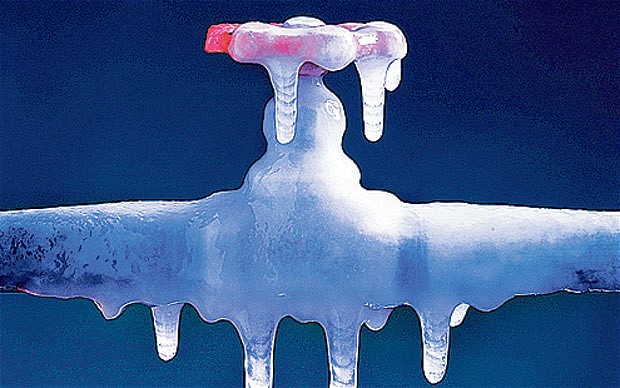Freezing temperatures can wreak havoc on your homes plumbing, but following these essential plumbing tips for cold weather can prevent most cold weather catastrophes:
- Outside Faucets – The leading cause of frozen pipes is hoses left attached to outside faucets. With a hose attached, especially a hose with a sprayer, the faucet is unable to drain which makes it susceptible to freezing. It is important during the cold seasons to disconnect the hoses from the outside faucets and store them away. Make sure to drain any remaining water from the outdoor hoes bib, as well. With older faucets, insulated faucet covers are highly recommended as they trap heat that radiates from the indoor plumbing to the outdoor spigot. This trapped heat prevents the spigot from freezing over and causing a burst pipe. Modern faucets typically do not require additional protection such as faucet covers, however, it doesn’t hurt to add them as an extra precaution.
- Insulate Pipes– All pipes should be well insulated and may also require heat tape.
- Heat Tape – Insulating your pipes is necessary but it is not always enough when the temperatures stay cold for several days at a time. This is where heat tape comes in handy. Heat tape should be applied to any pipe not in a conditioned space (i.e. attic or exposed under a mobile home).
- Check Heat Tape – If you already have heat tape in place, check to make sure it is still functioning! A lot can happen in one year so it’s important to check if the tape is still in good condition.
- Cabinet Doors – When it gets extremely cold, leave under-sink cabinet doors on exterior walls open to allow for warm air to circulate.
- Leave Faucets Dripping – Let water drip from the faucet served by exposed pipes. Running water through the pipe, even at a trickle, helps prevent pipes from freezing.
- Winterize – Any vacant property, outdoor kitchen or other outdoor plumbing should be properly winterized. You can winterize pipes and faucets by draining them down or blowing them out with compressed air if necessary.
We hope you’ve enjoyed these essential plumbing tips for cold weather and we look forward to sharing more plumbing tips with you in future posts!

